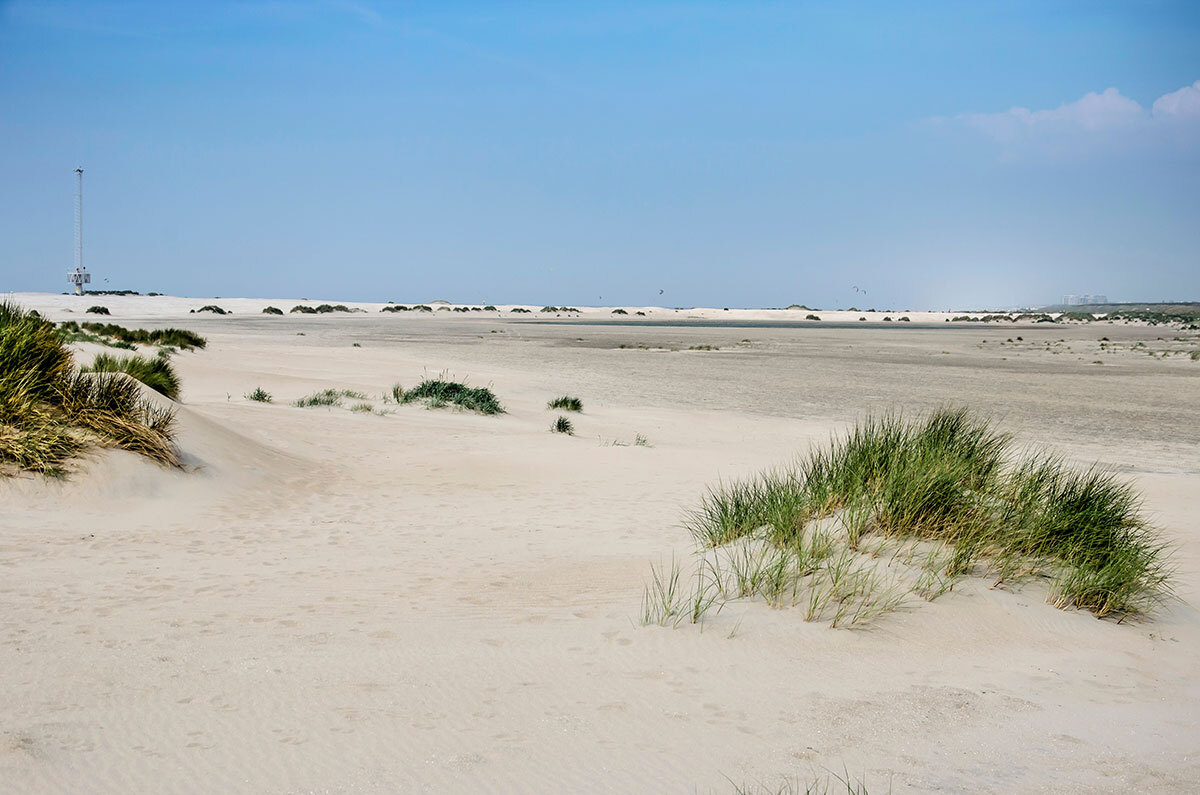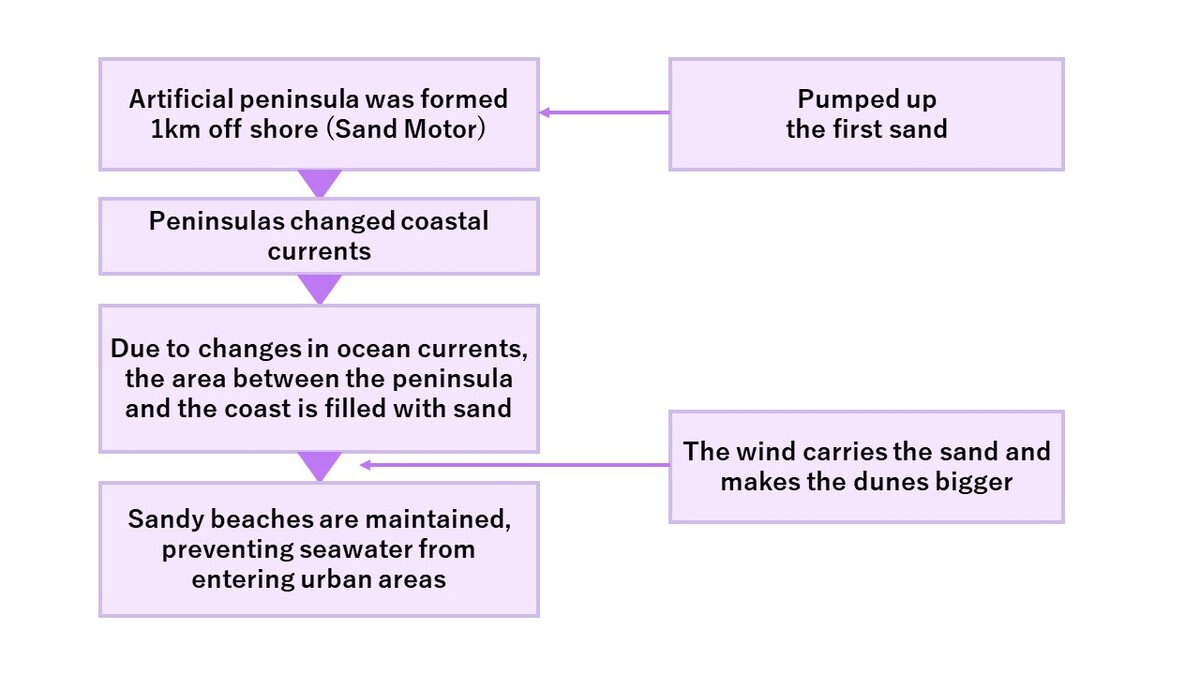
by Frans via AdobeStock
Climate change impacts
The sandy beaches on the coast of the Netherlands are being eroded by ocean currents every year, causing the subsequent incursion of seawater into low-lying urban areas.
Adaptation activity
The Sand Motor project was devised to counteract the damages caused by rising sea levels. Based on the concept of "building coasts through natural methods," the objective is to regenerate lost coastline by gradually redistributing sand over time through wind, wave, and tidal motion.
Outputs / Expected benefits
This method more cost-effective than traditional erosion countermeasures that rely on transportation of large quantities of sand. Although still in the experimental stage, the expansion of sandy beaches has increased tourism and enhanced the biodiversity of coastal areas.

Figure 1. Sand Motor function
(Source: Ministry of the Environment "Stop Global Warming 2017")

Figure 2. Sand Motor
(Source: Rijkswaterstaat, Interim results 2011-2015)
Related Information
- Rijkswaterstaat, Ministry of Infrastructure and the Environment(2016), Interim results 2011-2015- The Sand Motor: driver of innovative coast maintenance
- Government of the Netherlands (2014), Sand motor to enhance safety of coastal area
- European Environment Agency (2013), Adaptation in Europe-Addressing risks and opportunities from climate change in the context of socio-economic developments, EEA Report No 3/2013
- De Zandmotor
- Ministry of the Environment “Stop Global Warming 2017”<Japanese>




